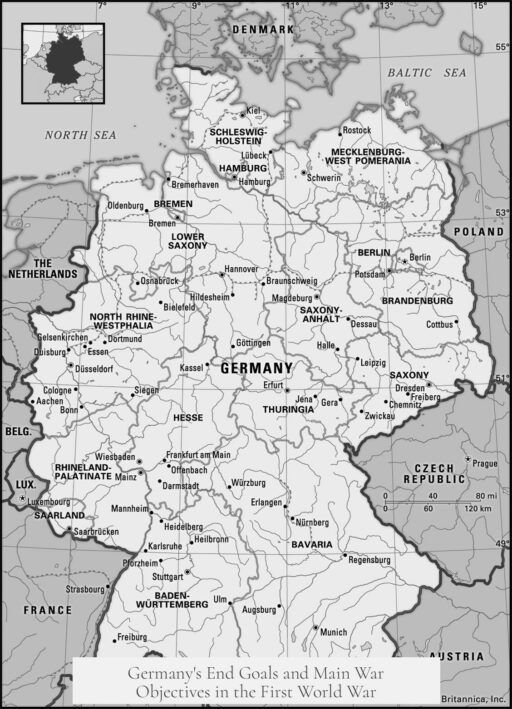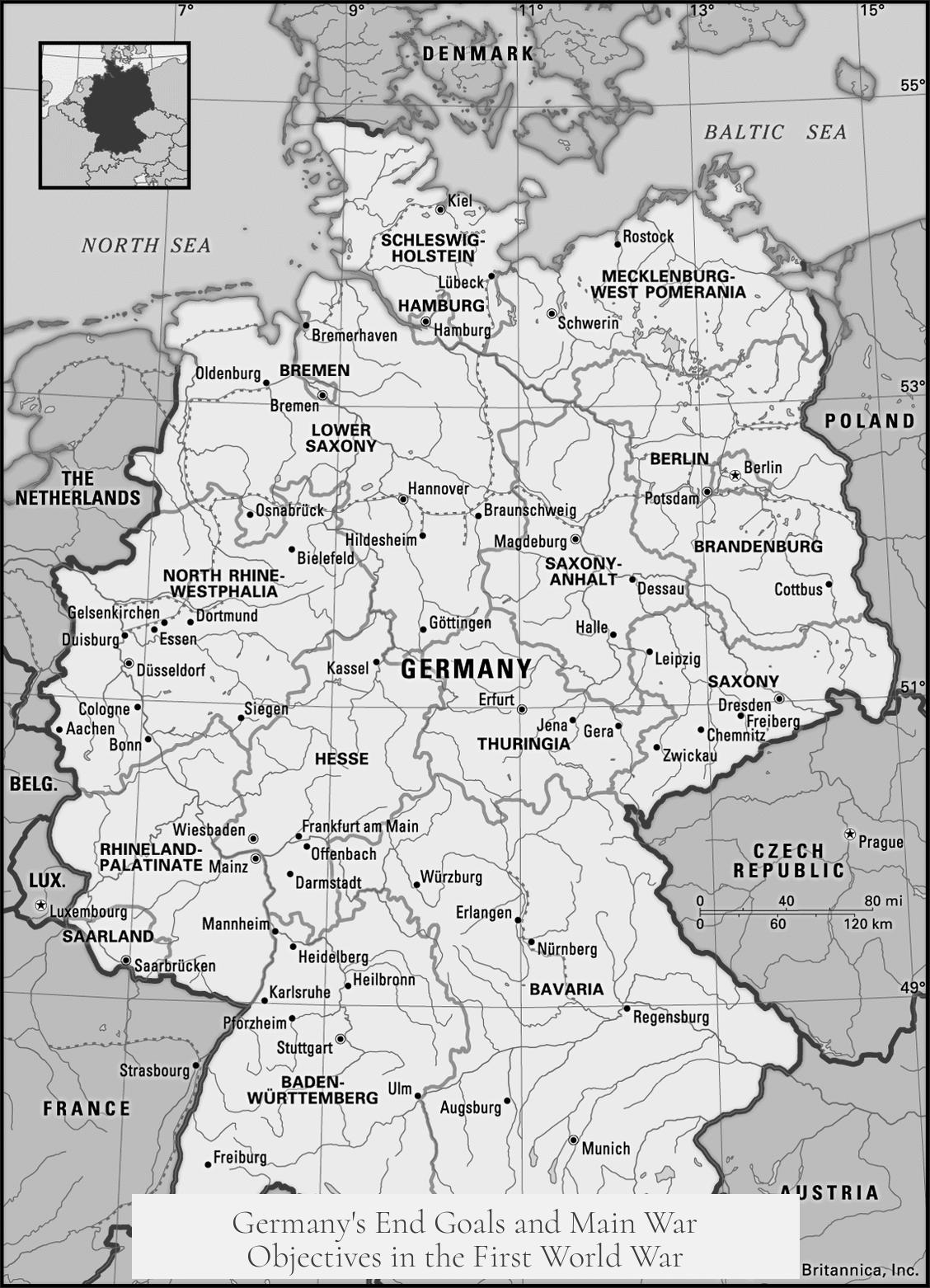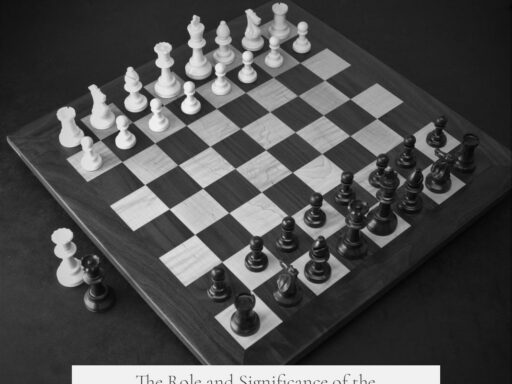Germany’s end goal in World War I focused on securing lasting national safety by expanding its territory and weakening rival powers, particularly France and Russia, while establishing economic dominance over Central Europe. This vision centered on a detailed plan known as the Septemberprogramm, which outlined ambitious military and political objectives. The plan aimed to create permanent security through large-scale annexations, weaken France as a military threat, control Belgium strategically, push back Russia’s influence, and build a German-centered economic bloc called Mitteleuropa.

The Septemberprogramm articulated a comprehensive strategy to safeguard the German Reich by altering the territorial and political landscape of Europe. Its primary concern was Germany’s long-term security against invasions from both western and eastern fronts. To achieve this, the program proposed significant territorial acquisitions to establish buffer zones and control key regions. Germany sought to annex areas that secured invasion routes and subdued likely adversaries.
In the west, France constituted the chief threat. The program aimed to weaken France so severely that it could never regain its status as a great power. France’s defensive capabilities would be crippled by forcing it to cede strategic locations such as the Vosges mountain range and the Belfort fortresses. This loss would open a permanent invasion corridor for Germany, enabling future military operations against France. Additionally, Germany planned to annex the Longwy-Briey region, home to 81% of France’s iron ore production before the war. This resource seizure would deprive France of critical industrial capacity.

To further disable France, Germany envisioned imposing an enormous indemnity. The financial burden would be calibrated to prevent France from rearming significantly for about twenty years, ensuring its long-term military weakness. This indemnity, combined with territorial losses, aimed to render France impotent as a future military rival.
The treatment of Belgium already under German occupation was clearly defined as subjugation. Germany intended Belgium to become a vassal state, stripped of independence. Critical Belgian Channel ports would host the German High Seas Fleet permanently. This naval presence would threaten the southern coast of Britain, particularly the Thames Estuary, enhancing Germany’s strategic reach across the English Channel.

On the eastern front, Germany aimed to push Russia far from its border. This involved breaking Russia’s dominance over its diverse non-Russian populations in the empire. The plan included the creation of puppet buffer states from territories like Poland, Ukraine, and the Baltic States, detached from Russian control and aligned under German influence. These buffer states would serve as protective barriers against future Russian aggression.
Economically, Germany sought domination through the idea of Mitteleuropa. This concept envisioned a trade and customs union encompassing Central Europe, with Germany at its center. The Mitteleuropa union was not designed as a cooperative European alliance but as a mechanism to guarantee German economic supremacy. It would secure markets for German products and exclude British trade from the continent. This plan aimed to transform Central Europe into an economically dependent region under German control.
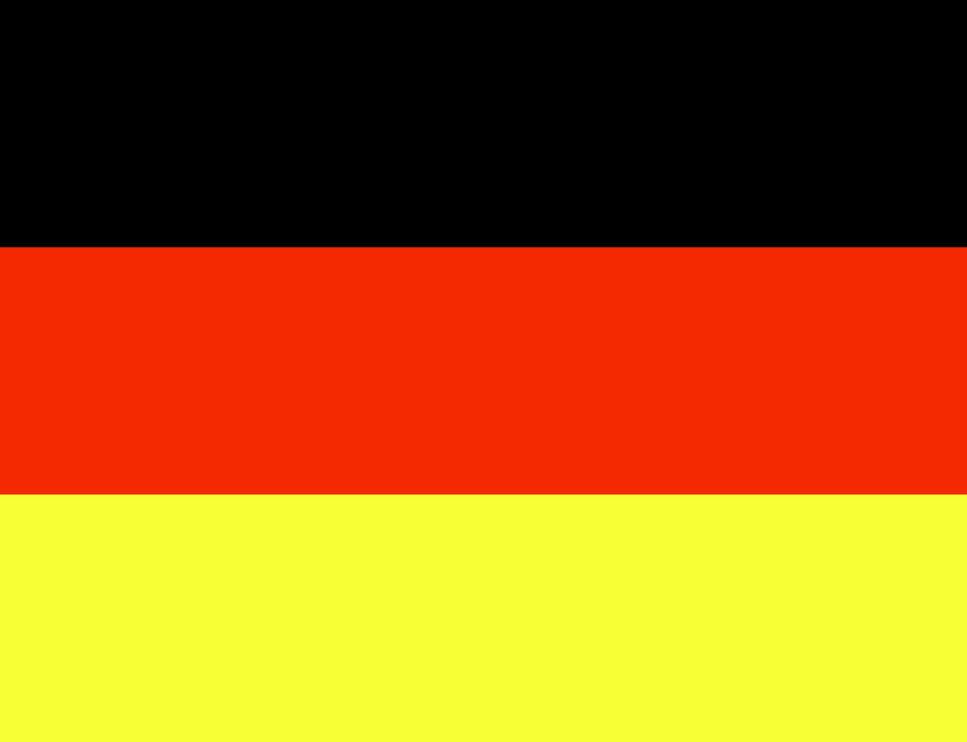
Despite the expansive goals, Germany’s political leadership faced internal constraints. Chancellor Bethmann-Hollweg recognized the controversy that annexation stirred within the German population. Broad public support for conquest was minimal, largely limited to a faction on the nationalist right. The largest political party in the Reichstag, the Social Democrats, held moderate views and had supported the war as a defensive measure. They opposed exploiting the working class for territorial expansion, although they also rejected French claims to Alsace-Lorraine.
Bethmann-Hollweg balanced ambition with pragmatism, willing to moderate territorial ambitions to maintain political support. He considered the Mitteleuropa economic union essential and non-negotiable for ensuring German security. Over time, however, as military leaders gained more influence over policy, the army pushed for greater territorial gains. This shift is visible in the harsh terms Germany imposed on Russia at the Treaty of Brest-Litovsk in 1918, where Germany sought to dismantle large parts of the Russian Empire.
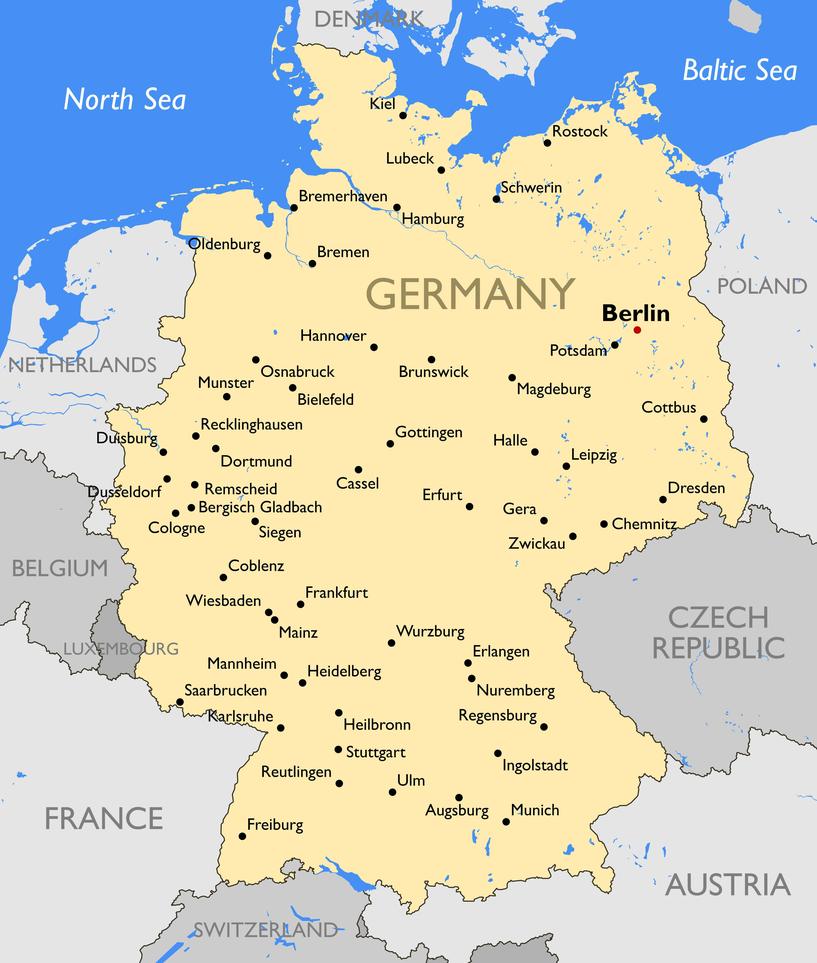
| Aspect | Details |
|---|---|
| Security | Large-scale annexations to secure borders, establish buffer states, and prevent future invasions. |
| France | Territorial losses (Vosges, Belfort), economic weakening through indemnities, and seizure of iron ore mines. |
| Belgium | Turned into a vassal state; Channel ports used by German navy against Britain. |
| Russia | Push eastward, fragment empire, create puppet buffer states in Poland, Ukraine, Baltic states. |
| Economics | Mitteleuropa trade union under German control; economic dominance and exclusion of British trade. |
| Domestic Politics | Limited annexation support; pragmatic leadership attempted to balance ambitions with political reality. |
| Military Influence | Army gained power, pushing for expanded territorial annexations and harsh peace terms (e.g., Brest-Litovsk). |
- Germany’s war goal was to ensure permanent security by reshaping its borders and subduing key rivals.
- The Septemberprogramm detailed specific territorial and economic objectives mainly targeting France, Belgium, and Russia.
- Mitteleuropa aimed at creating a German-dominated economic bloc in Central Europe.
- Internal political dynamics limited annexation ambitions, with leadership attempting pragmatism to maintain national unity.
- The army’s increased control late in the war pushed for harsher territorial demands, especially against Russia.
In the 1st World War, what was Germany’s end goal and main war objectives?
Germany’s primary goal in WWI was to achieve lasting security and dominance in Europe through territorial annexations and economic control. Sounds bold, right? Let’s unpack what that meant in practice.
Germany didn’t just want to win the war. They planned a sweeping transformation of Central Europe. Their objectives were laid out early on in a document known as the Septemberprogramm. This program reveals a lot about the empire’s ambitions during the conflict.
The Septemberprogramm: Blueprint of Ambition
Germany aimed for security “for all imaginable time,” achieved by expanding its territory on multiple fronts. That meant big annexations to secure invasion routes and keep potentially hostile neighbors in check.
- In the west: France was to be weakened to the point where it could never threaten Germany again. Germany planned to annex key strategic regions, including the defensive line of the Vosges mountains and the fortresses of Belfort. This wasn’t just some border tweaking; it was about permanently opening an invasion corridor into France.
- A hefty indemnity was on the table too — designed to cripple France economically, stopping it from rearming in any significant way for at least two decades.
- And then there were the iron ore mines at Longwy-Briey, responsible for 81% of France’s iron output during peacetime. Germany wanted to claim those outright to bolster its own industrial war machine.
France wasn’t the only target.
- Belgium was slated to become a vassal state with its Channel ports used by the German High Seas Fleet. Imagine Germany’s navy parked right at Britain’s doorstep, threatening the Thames Estuary directly. Spooky, huh?
- In the east, the plan was to push Russia far away from Germany’s border. Poland, Ukraine, and the Baltic states would be carved out of the Russian Empire and turned into German puppet states—creating a buffer zone against Russian threats.
Mitteleuropa: Economic Empire Under One Roof
Military might was only part of the picture. Germany envisioned more than just conquest; it wanted economic domination over Central Europe through a concept called Mitteleuropa.
- The idea? Create a trade and customs union under German control.
- No open borders with butterflies and flowers here — Germany would hold the economic reins, funneling markets towards its own industries.
- Britain, an obvious rival, would find itself shut out of European trade markets. Not a friendly “let’s all get along” club. This was economic warfare.
This plan highlights something crucial: Germany’s leadership saw economics as a weapon as sharp as any bayonet, using control of markets to bind countries close — under German dominance.
Politics and Pragmatism: Limits to Expansion
But hold on, it wasn’t all straightforward. Not everyone in Germany dreamed of vast empires.
- Chancellor Bethmann-Hollweg knew the public wasn’t fully onboard with aggressive annexations. The powerful Social Democrats, the largest party in the Reichstag, supported the war as defensive, not a conquest mission.
- Workers dying for imperial grab? No thanks, they said — although they also refused French ownership of Alsace-Lorraine, a contested area. So, opinions were nuanced.
- Bethmann-Hollweg was pragmatic. He was willing to dial back on territorial grabs but insisted on keeping the economic unification plan — Mitteleuropa — intact as it promised security through dominance, not just military might.
The Army’s Growing Influence and Final Push East
As the years dragged on, the military grew more powerful in German politics.
- Their influence urged bolder territorial ambitions.
- This culminated in the Treaty of Brest-Litovsk in 1918, where Germany imposed harsh terms on Russia. The treaty stripped Russia of large areas, establishing the puppet states envisioned earlier, fulfilling the Eastern expansion goals of Septemberprogramm.
What Does This All Mean?
Germany’s aims in WWI were not mere defense but a transformative vision for Europe — a mix of military might, territorial annexations, and economic supremacy. They wanted a secure, dominant Reich surrounded by compliant states, and an economy that served German interests exclusively.
The war objectives testing these ambitions included:
- Weakening France permanently and annexing strategic regions to ensure no future threat from the west.
- Making Belgium a vassal and a naval staging ground to pressure Britain.
- Peeling off territories from Russia, carving puppet buffer states eastward.
- Establishing Mitteleuropa, an economic union dominated by Germany, locking Britain out economically and controlling Central European markets.
These goals explain the ruthlessness and scope of Germany’s strategy. It’s not just battlefield tactics but a grand design for the future of Europe, mixing land, power, and economics.
But Why Does This Matter Today?
Understanding Germany’s Septemberprogramm and war intentions sheds light on the origins of twentieth-century conflicts. It helps grasp why the war escalated as it did and why peace after 1918 was so fragile, planted with seeds for the next great conflict.
So next time you think of WWI, remember: Germany was not playing a short game. It was plotting a European order with itself at the center — lots to chew on!
“The war aims of Germany were a complex mix of defense, conquest, and economic domination… designed to secure the Reich for all time.” — Historian insight on the Septemberprogramm.
What was Germany’s main security goal in World War I?
Germany aimed to ensure long-term security on both western and eastern fronts. This involved annexing territories to secure invasion routes and weaken opponents permanently.
How did Germany plan to weaken France?
Germany sought to prevent France from regaining power by forcing territorial cessions, such as the Vosges mountains and Belfort fortresses. They aimed to impose heavy reparations and annex key iron ore mines.
What role did Belgium have in Germany’s war objectives?
Belgium was meant to become a vassal state. Its Channel ports were targeted to host the German High Seas Fleet, allowing Germany to threaten southern Britain and the Thames Estuary.
What was the idea of Mitteleuropa in Germany’s war strategy?
Mitteleuropa referred to economic control over Central Europe through a trade and customs union. This would lock British trade out and guarantee German economic dominance in the region.
How did internal politics affect Germany’s war aims?
Public support for annexations was limited, especially among moderate Social Democrats. Chancellor Bethmann-Hollweg sought to focus on economic dominance via Mitteleuropa rather than large-scale territorial conquest.
What was the significance of the Treaty of Brest-Litovsk for Germany’s goals?
The treaty allowed Germany to dismantle Russia’s influence and create puppet states in Poland, Ukraine, and the Baltic States, pushing Russia far from Germany’s eastern border.
